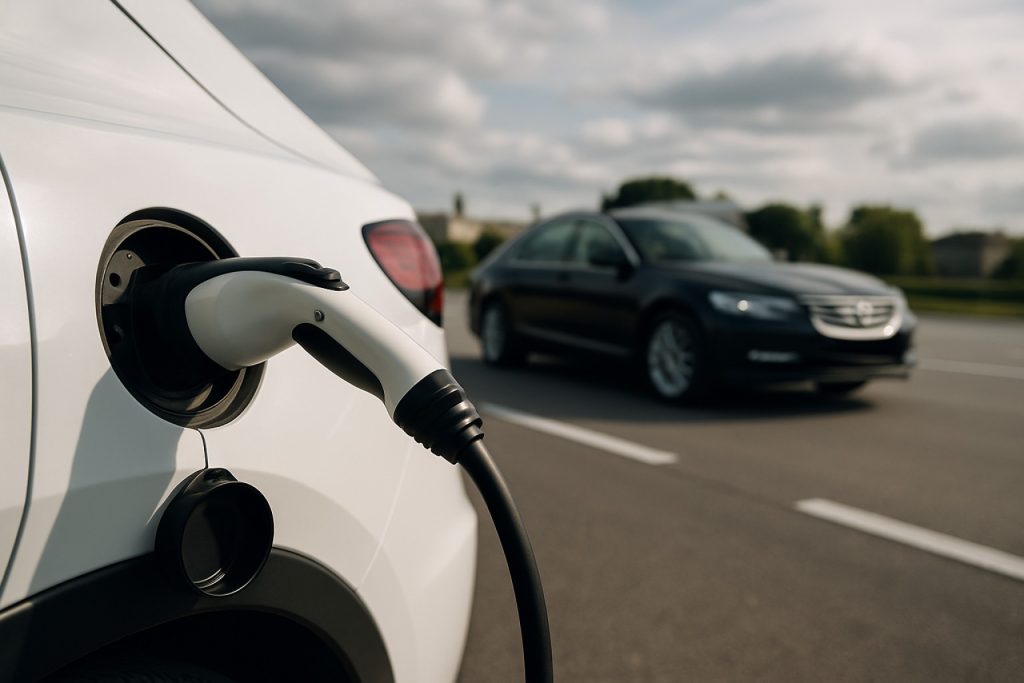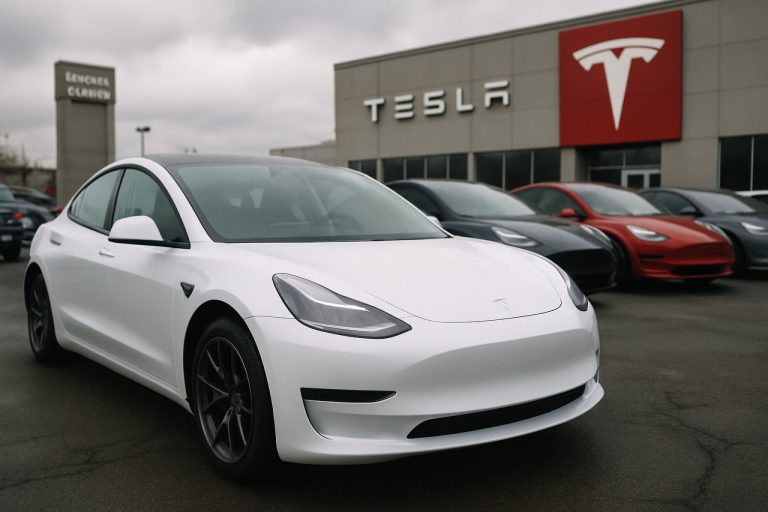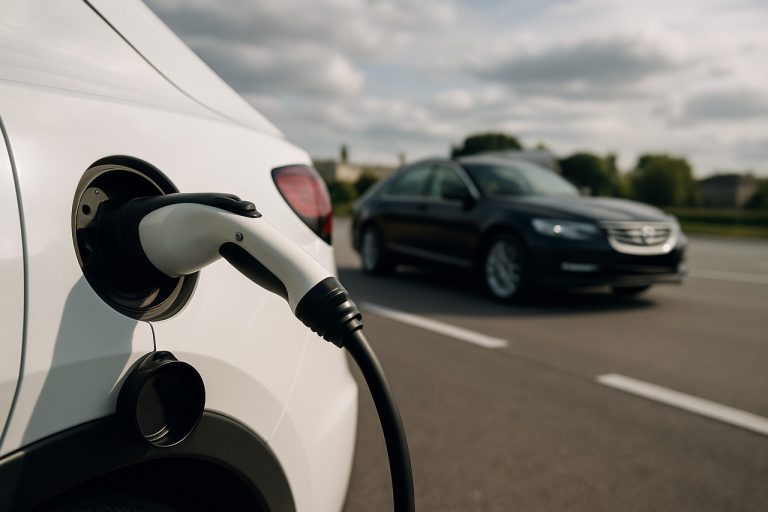
- Global carmakers are redirecting investments toward turbocharged engines and hybrid systems as demand for electric vehicles (EVs) stalls.
- General Motors is emphasizing next-generation V8 engines over EVs, signaling a strategic industry shift.
- Major automakers like Toyota and Honda have reduced their ambitious electrification targets due to slow EV adoption and uncertain government policies.
- Regulatory delays in the U.S. and Europe have complicated the transition toward all-electric models.
- Hybrid technology is gaining popularity as a practical bridge between gasoline and fully electric cars.
- The growing cost gap between EVs and traditional vehicles remains a major barrier, especially as subsidies decrease.
- The automotive future looks increasingly diverse, with manufacturers adapting strategies to address fluctuating consumer preferences and market realities.
Turbocharged engines and hybrid systems are roaring back to the center stage of the world’s auto industry. Smoke-streaked test tracks, rumbling assembly lines, and newly minted investments reveal a fresh drama: global carmakers, once transfixed by the promise of all-electric futures, are now recalibrating in the face of stalling demand and shifting policies.
Last week, General Motors stunned industry watchers by pledging nearly $900 million to retrofit its Tonawanda engine plant in New York — not for another batch of battery-powered machines, but for a next-generation V8 engine. The thunderous engine, set for debut in 2027, is designed to propel the company’s iconic pickup trucks and SUVs, signaling a tangible pivot from its earlier electric vehicle (EV) ambitions. Just last year, GM steered $300 million into the same factory for EV production; those dreams are now on hold as the company bets anew on gasoline.
This isn’t a detour unique to America. Automakers across continents are pumping the brakes on their electrification timelines. In the U.S., monthly EV sales slipped by 5.6% from last year, marking only the third monthly decline since 2021. Even titans like Toyota and Honda have scaled back their electric car goals, citing tepid consumer appetite and uncertain regulatory support. Toyota slashed its 2026 EV target from 1.5 million units to 800,000; Honda trimmed its 2030 projection for EVs as a share of sales from 30% to 20%.
The gears of public policy, always slow to mesh, are grinding in the opposite direction. Fears over the rollback of EV tax credits under a potential new U.S. administration have added uncertainty. Meanwhile, the European Union, once an electrification vanguard, postponed new carbon penalties on automakers after industry resistance, postponing a costly new regime of emissions fines that could have cost carmakers 16 billion euros a year. Volkswagen, amidst these shifting sands, redirected 60 billion euros into combustion technology — nearly a third of its planned five-year electric vehicle allocation.
Hybrid technologies have become a popular detour in this uncertain transition. Hyundai Motor Group, for example, unveiled an advanced hybrid system and altered its U.S. factory plans to integrate hybrid as well as electric production — a pragmatic leapstone that appeals to wary consumers and inventive engineers alike.
The economic math matters. According to respected industry analysts, widespread adoption of electric vehicles hinges on closing the price gap with gasoline cars. The problem? Subsidies that used to give EVs the edge are dwindling, and without fresh breakthroughs to drive down production costs, the demand slowdown may persist.
The turbulence is also triggering strategic overhaul at the corporate level. GM’s Korean division, for instance, is selling several domestic service centers and unused factory assets. Leadership emphasizes it’s a streamlining move, intended to maximize asset value and sustain the business, not a retreat from the Korean market.
This uncertain age is not just about which engine sits under the hood, but about the very roadmap to an automotive future. Car buyers still dream of quieter, cleaner journeys — but for now, reliability, range, and traditional value steer the wheel. And as manufacturers bet billions on a diverse mix of engines, batteries, and hybrid blends, one thing is clear: the road to tomorrow isn’t a straight line, but a winding race where only the adaptable will thrive.
To keep pace with the shifting future of mobility, visit GM, Toyota, or Hyundai for their latest innovations and strategies.
Takeaway: As the electric vehicle revolution sputters, global carmakers are rebalancing their strategies, investing heavily in traditional engines and hybrids. Adaptation, not acceleration, now drives the next chapter of the automotive world.
The Shocking Comeback of Gas Engines and Hybrids: Why the All-Electric Dream Hit the Brakes
# Turbulent Times in the Auto Industry: Inside the Global Shift from EVs to Hybrids and Gas
The automotive world’s path to the all-electric future—once believed to be a straight highway—is hitting unexpected detours. As major automakers recalibrate, turbocharged internal combustion engines (ICE) and advanced hybrid systems are stealing the spotlight. What’s driving this dramatic U-turn? Here’s a comprehensive look beyond the headlines, including real-world use cases, market forecasts, industry controversies, and quick tips for car buyers.
—
Why Are Automakers Shifting from Pure EVs to Hybrids & Gas?
Declining EV Demand & Rising Consumer Concerns
– Sales Slowdown: According to Cox Automotive, Q1 2024 U.S. EV sales only increased by 2.7% year-over-year, a sharp deceleration from previous periods. The source mentions a recent 5.6% monthly decline—one of only three since 2021. Source: [Reuters](https://www.reuters.com).
– Core Barriers: Consumers remain worried about range, charging infrastructure, and battery longevity. AAA’s 2022 study found “range anxiety” affects 60% of potential EV buyers. Source: [AAA](https://www.aaa.com).
– Affordability Gap: Even with discounts, the average EV transaction price is $10,000–$13,000 higher than gasoline vehicles (Kelley Blue Book, 2024).
Policy Uncertainties
– Possible Rollback of U.S. Incentives: The 2024 U.S. presidential election could mean a major reversal of federal EV subsidies and emissions regulations, making the EV path riskier for automakers.
– Shifting European Regulations: The EU delayed stricter CO2 penalties, offering relief to traditional carmakers (originally set to cost €16B/year). Source: [European Commission](https://ec.europa.eu).
– China’s Hybrid Boom: China, the world’s largest auto market, now supports plug-in hybrids alongside EVs, accelerating hybrid adoption for both local and foreign manufacturers. Source: [Bloomberg](https://www.bloomberg.com).
—
Behind the Scenes: What’s Happening Inside Carmaker HQs?
GM’s Engine Gambit
– In 2024, GM announced a fresh $900M for V8 engine production in Tonawanda, NY, just a year after investing $300M for EVs at the same plant.
– The upcoming next-gen V8 engine, ready by 2027, will power popular Chevy Silverado and GMC Sierra pickups.
– Strategically, this hedges GM’s bets against slow EV adoption while serving high-revenue segments where customers demand towing and range.
VW, Toyota, and Honda Reconsider EV Goals
– Volkswagen: Redirected €60B to combustion and hybrid tech, nearly 1/3 of its previous five-year EV budget. The company is also investing heavily in plug-in hybrids for its European and North American portfolios.
– Toyota: Decreased its 2026 EV production target from 1.5M to 800,000 units, while doubling down on hybrids and hydrogen power.
– Honda: Trimmed its 2030 EV sales ratio from 30% to 20%, prioritizing flexible platforms.
Real-World Use Case: Hyundai’s Dual-Track Factories
– Hyundai Motor Group’s North American plants have retooled to build both hybrids and full EVs side by side, minimizing risk and offering consumers a wider range of options.
—
Features, Specs, & Pricing: How Do EVs, Hybrids, and Gas Cars Compare?
| Technology | Avg. Range (US 2024) | MSRP Price Range | Key Features | Maintenance Cost (5yrs) |
|————|———————|——————-|————————————–|————————|
| ICE (Gas) | 350-450 miles | $25,000–$80,000 | High towing, quick refuel | $6,000–$8,000 |
| Hybrid | 400–700 miles | $28,000–$55,000 | Lower emissions, regen braking | $4,000–$6,500 |
| PHEV | 20-60 electric + gas range | $32,000–$60,000 | Electric drive for short trips + gas | $4,500–$7,000 |
| EV | 220–350 miles (up to 500) | $35,000–$110,000 | Zero tailpipe emissions, silent ride | $3,000–$5,000 |
Excludes out-of-warranty battery replacement (can be $7,000–$15,000)
—
Pros & Cons Overview
Gas & Hybrids
– Pros: Readily available infrastructure; proven reliability; lower upfront costs (gas); better range (hybrids).
– Cons: Ongoing emissions; may face future restrictions; less torque than EVs.
EVs
– Pros: Zero tailpipe emissions; instant torque; low maintenance.
– Cons: Limited charging infrastructure; higher upfront cost; battery replacement concerns; resale value risk as technology rapidly advances.
—
Hot Questions Readers Are Asking—Answered
Will I Save Money Buying a Hybrid over an EV?
Generally, yes for most U.S. drivers in the short term (3–5 years), hybrids have lower upfront costs and no need for home charging upgrades.
Is it Safe to Buy a Non-Electric Car Now?
Yes, and it’s likely to remain safe for at least the next decade, especially in North America. Most experts (including J.D. Power and McKinsey auto consultants) expect ICE and hybrid models to dominate new sales until at least 2035.
What Are the Most Reliable Hybrids?
Leading picks in 2024 are the Toyota RAV4 Hybrid, Hyundai Sonata Hybrid, and Honda CR-V Hybrid—each with high owner satisfaction, excellent EPA ratings, and proven long-term durability.
Is EV Ownership Cheaper in the Long Run?
It depends—mostly on local electricity costs, driving habits, and government incentives. Without incentives and without home charging, savings may take longer to materialize compared to hybrids. Source: [Consumer Reports](https://www.consumerreports.org).
—
Market Forecasts & Industry Trends
– Global Projections: By 2030, S&P Global Mobility predicts a roughly 40% market share for electrified vehicles (including hybrids), with pure EVs making up 20–25%.
– Resurgence of Hybrids: Industry giants (Toyota, Ford, Hyundai) are releasing new hybrid models annually, with plug-in hybrids growing especially fast in the U.S., Europe, and China.
– Battery Tech Plateau: Without major breakthroughs, lithium-ion battery costs are stuck at $140–$150/kWh—well above the $100/kWh goal for affordable EVs.
—
Controversies & Limitations
– Industry Criticism: Some environmental groups accuse automakers of “greenwashing” with hybrids, arguing these prolong reliance on fossil fuels.
– Resale Concern: Rapid improvements in electric and hybrid technology risk making today’s models obsolete faster, impacting resale values.
– Charging Infrastructure Gaps: While Tesla has led the U.S. with its Supercharger network, rivals struggle to match nationwide charging reliability. Source: [Tesla](https://www.tesla.com).
—
Actionable Recommendations & Quick Tips
1. Set Priorities: List what matters most—fuel savings, range, maintenance costs, or environmental impact—before test-driving any model.
2. Crunch the Numbers: Use calculators from automakers or trusted sites (e.g., RouteZero, [Toyota](https://www.toyota.com), [Hyundai](https://www.hyundai.com)) to compare lifetime costs.
3. Look for Incentives: Check for evolving federal, state, or local incentives for hybrids and EVs.
4. Ask About Battery Warranties: Long warranties (8–10 years) on hybrid/EV batteries protect against unexpected costs.
5. Stay Flexible: Markets and technology are changing rapidly. Leasing may be smarter than buying if you expect further breakthroughs in a few years.
—
Visit for More
For updates on new vehicle launches, pricing, and innovative technologies, check leading automakers’ official sites:
– [GM](https://www.gm.com)
– [Toyota](https://www.toyota.com)
– [Hyundai](https://www.hyundai.com)
—
Key Takeaway
The all-electric revolution isn’t canceled—but it’s clearly delayed. Hybrid and turbocharged gas cars are once again the practical, reliable choice for millions. Adaptation is the name of the game in today’s auto world: buyers and manufacturers alike should stay informed, flexible, and focused on total value, not just the latest hype.



